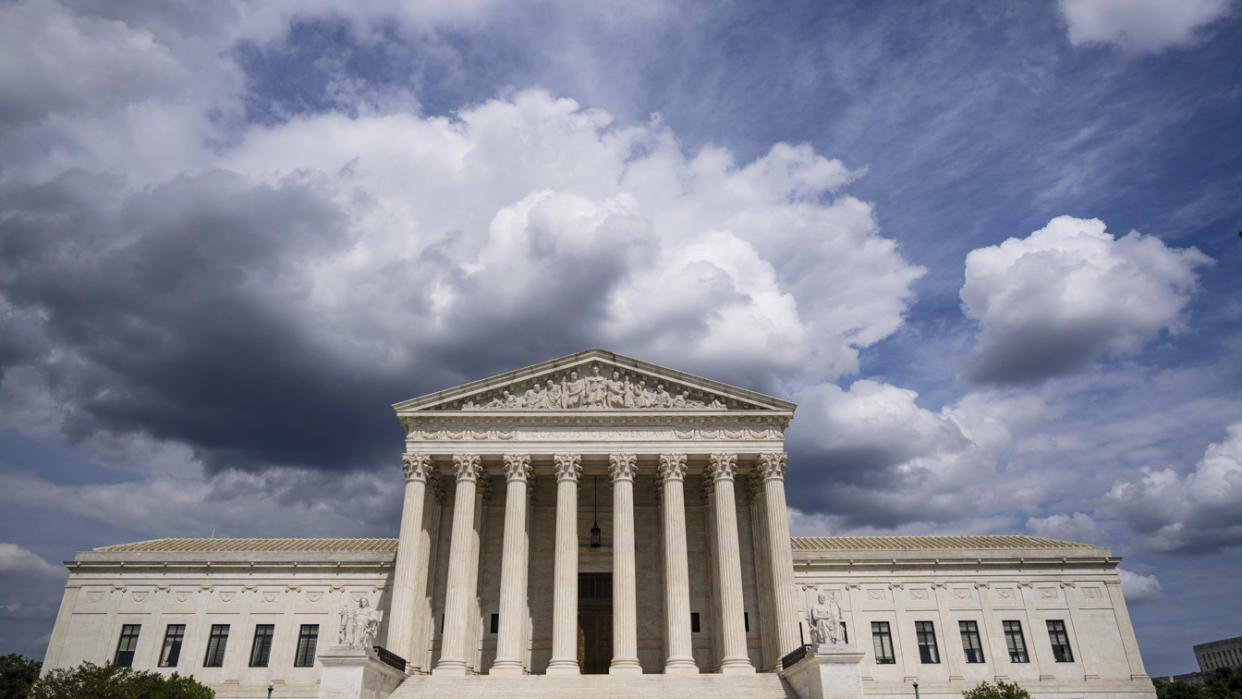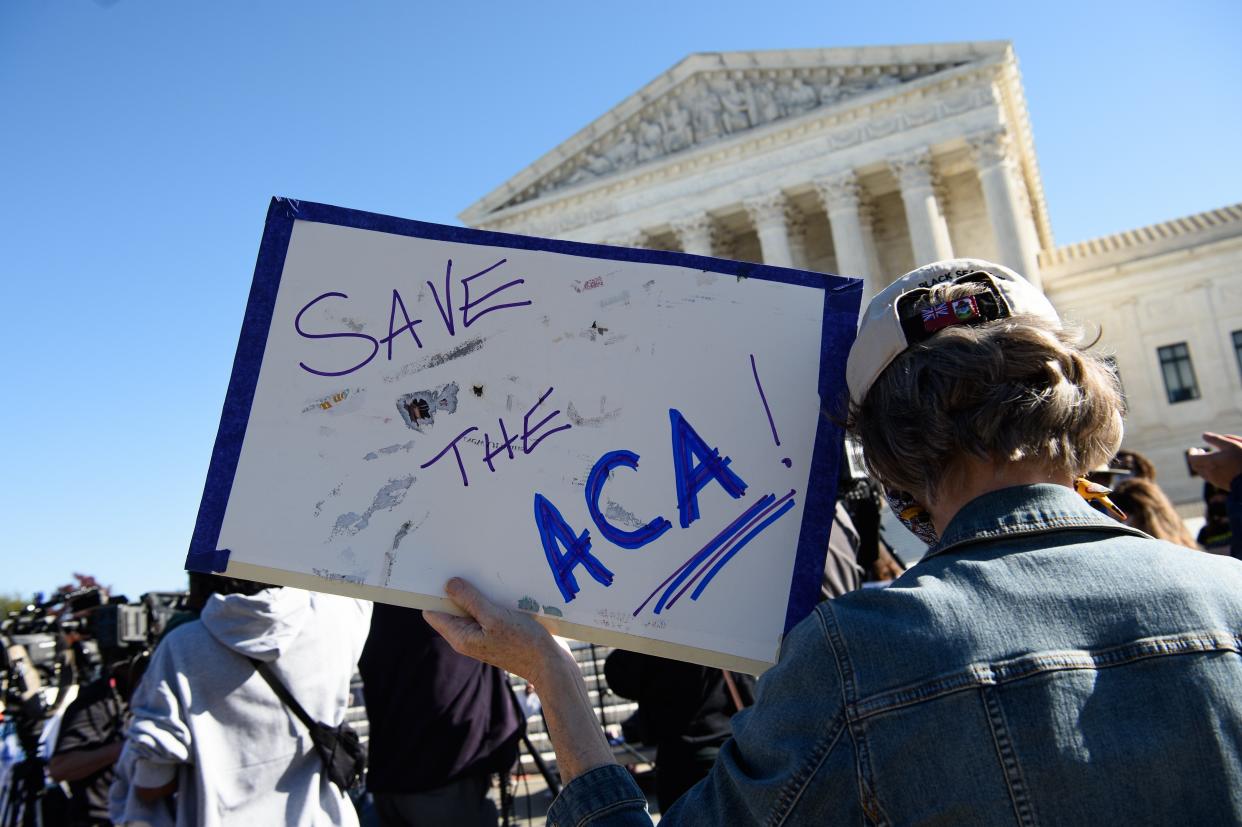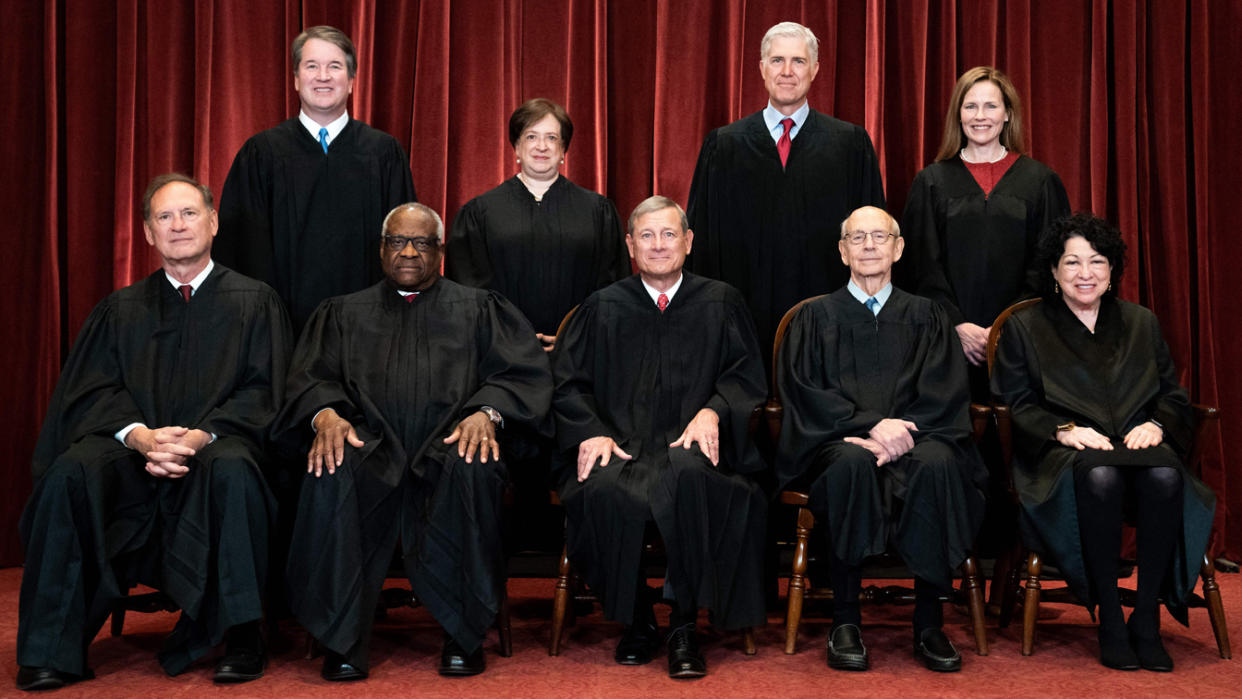From voting rights to health care, Supreme Court set to deliver major decisions this year
Over the next month, the Supreme Court will be closing out its annual term, clearing out its docket and providing a look at how the new 6-3 conservative majority — featuring three justices appointed by then-President Donald Trump — will rule in the future.
While next year’s slate is expected to be far more controversial, featuring cases on abortion and guns, there are still some major issues that will come up in 2021. Below are a few of the cases for which we’re still awaiting rulings.

Voting rights: Brnovich v. Democratic National Committee
Republican Arizona Attorney General Mark Brnovich is currently dealing with a partisan audit of the 2020 election results in his state and attacks from Trump, but he’s also involved in this case revolving around voters’ rights.
The conservative justices are expected to rule on the side of Brnovich and uphold two Arizona state laws that would require election officials to throw out ballots cast at the wrong precinct and make it a crime for most people to deliver another person’s ballot to a polling place. Critics of the laws say that they violate parts of the Voting Rights Act, but President Biden’s Justice Department wrote in a February letter that it didn’t believe the laws were in violation of the VRA.
Chief Justice John Roberts’s opinion in 2013’s Shelby County v. Holder gutted parts of the original 1965 law, paving the way for the surge in state laws that make it more difficult to vote that have been passed and proposed across the country in recent months. If the conservative justices opt for a broad ruling in this case, the VRA could be further undercut.
Health care: California v. Texas

This is a case tied to the Affordable Care Act, or Obamacare, brought forth by a number of Republican states and supported by the Trump White House. The argument is that when Republicans in Congress eliminated the individual mandate for uninsured people in 2017, the entire legislation became invalid.
“No further analysis is necessary; once the individual mandate and the guaranteed-issue and community-rating provisions are invalidated, the remainder of the ACA cannot survive,” wrote then-Solicitor General Noel Francisco in support of the filing last year.
A number of Democratic states, led by California, are defending the law, and even opponents of the ACA, like the Wall Street Journal editorial board, think this attempt to eliminate the law will likely fail. However, only four of the justices who upheld the legislation in a 2012 ruling — Roberts and the three remaining liberals — are still on the court.
Without the protections for preexisting conditions provided by Obamacare, the Kaiser Family Foundation estimated in 2016 that up to 52 million people could be denied coverage. Others would lose insurance if the Medicaid expansion that was adopted by dozens of states and Washington, D.C., is killed.
LGBTQ protections and religious freedom: Fulton v. City of Philadelphia
The case of an organization helping to screen prospective parents in Philadelphia will decide whether same-sex couples have the same protections as racial minorities when it comes to adoption.
The city ended its contract with Catholic Social Services to help handle adoptions after a 2018 Philadelphia Inquirer report said that the group refused to place children with LGBTQ couples. CSS said no same-sex couples had applied with it and that if they did it would refer them to a different agency, while the city still contracted the group for other services.
The ruling could potentially portend a reevaluation of the 2015 decision on Obergefell v. Hodges, which legalized same-sex marriage across the country. Two of the justices who supported that ruling, Anthony Kennedy and Ruth Bader Ginsburg, are no longer on the court and have been replaced by Trump appointees. Justice Samuel Alito, who dissented on the Obergefell ruling, said the city was targeting people who object to same-sex marriage on religious grounds.
“If we are honest about what’s really going on here,” Alito said during oral arguments in November, “it’s not about ensuring that same-sex couples in Philadelphia have the opportunity to be foster parents. It’s the fact that the city can’t stand the message that Catholic Social Services and the archdiocese are sending by continuing to adhere to the old-fashioned view about marriage.”
Free speech: Mahanoy Area School District v. B.L.

This case will test the limits of free speech for students and the power of schools to discipline when it comes to social media platforms. In 2017, a high school freshman unleashed a string of profanities on her personal Snapchat after she found she had failed to make the varsity cheerleading squad, saying “f*** school, f*** softball, f*** cheer, f*** everything.” Another student showed the comments to her mother, a coach, and the student was suspended from the junior varsity team for a year.
The suspended student sued and the U.S. Court of Appeals ruled in her favor, finding that the First Amendment did not allow public schools to issue punishments for speech made outside school grounds. Educators have argued that if they’re unable to monitor students beyond what they say or do in school, it will make it more difficult to police cyberbullying and online abuse, much of which happens outside of the building and normal school hours.
The student is being represented by the American Civil Liberties Union, which has argued that there needs to be limits on the censorship of students.
“The question presented recurs constantly and has become even more urgent as COVID-19 has forced schools to operate online,” argued the school district in a filing urging the court to take up the case. “Only this Court can resolve this threshold First Amendment question bedeviling the Nation’s nearly 100,000 public schools.”
“I’m frightened to death of writing a standard,” Justice Stephen Breyer said during oral arguments, adding that if students were monitored for profanity, “every school in the country would be doing nothing but punishing.”
____
Read more from Yahoo News:


